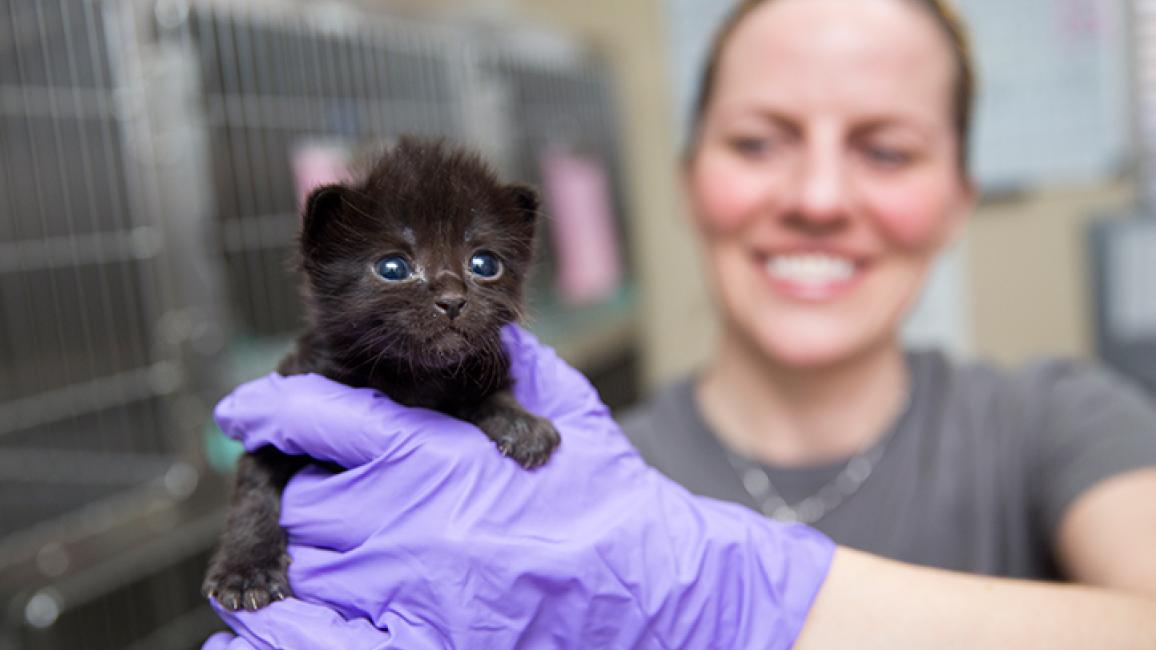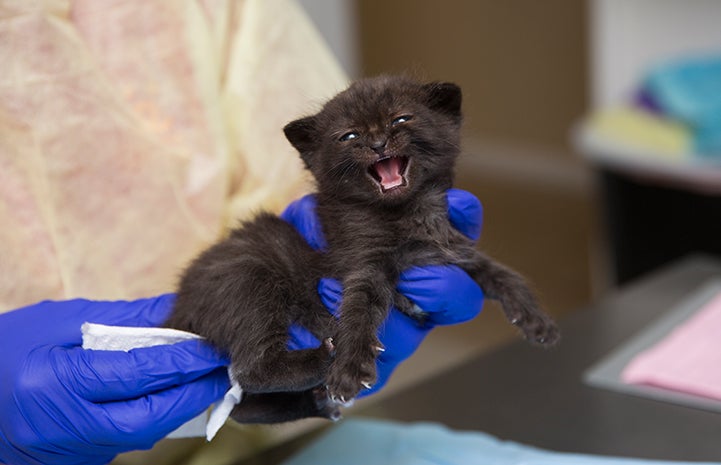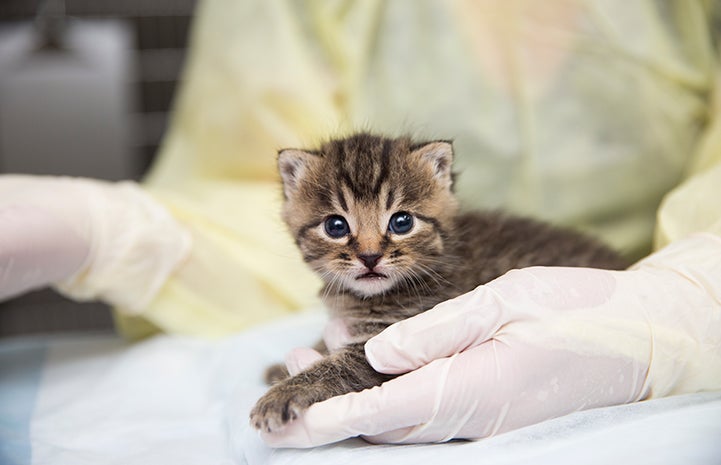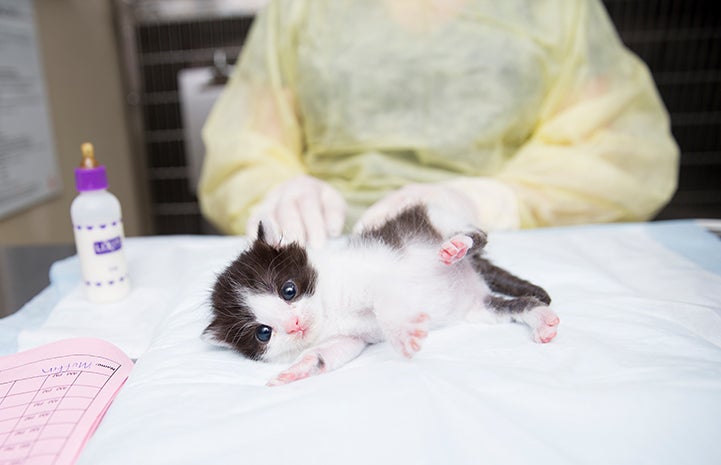Newborn kittens have cause to celebrate Mother’s Day

It’s worth it for the milk moustaches alone. Cleaning, feeding and protecting the smallest kittens imaginable is a full-time job, and best done by a mama cat. But when newborn kittens are separated from their mothers, someone has to take on that job or they don’t survive. That’s how an army of people who work or volunteer in one of Best Friends’ kitten nurseries get to be honorary moms of just about the most adorable baby kittens.
Because Mother’s Day is just around the corner, we wanted to take a peek into what it takes to be the closest thing to a kitten mama. Danielle Slaughter was a caregiver at the Best Friends Kitten Nursery in Salt Lake City, Utah for two years. Newborn kittens come to the nursery from nearby animal control agencies and from Best Friends partner shelters as part of our No-Kill Utah (NKUT) initiative. There, Danielle and many others took on the task of caring for kittens from birth.
A letter from the nursery
I had no idea how fragile kittens were before I started working in the kitten nursery.
I wanted to help save kittens, but only now do I really understand how hard it is to keep them safe and growing. They’re so vulnerable — it’s no wonder most shelters can’t give them what they need.
Here, we bottle-feed them every two to four hours. Once they’re weaned, they need to be fed every four to six hours. It takes a lot of time to teach them to eat solid food and make sure they eat enough. You have to help them go to the bathroom. It’s a lot of hands-on care, and it’s very time-consuming.

But every time a new one arrives, we’re overwhelmed by the cuteness. We fall in love again and again. And then the serious work begins. Is the kitten OK? Do we need to jump in and do lifesaving, or do we just need to get him set up and warm? The kittens come from the shelter in all kinds of conditions. There’s a broad range.
The longer they stay or the more help they need, the more we get attached. I remember Catherine Willows, a brown tabby who arrived sick and needed tube-feeding. First, she had a bad upper respiratory infection, and then she had ringworm. She stayed so long that I looked forward to seeing her every day. Finally, she got well and it was time for her to go to our adoption center. I was so proud to see her off to the happy life she was meant to have, but saying goodbye is always so hard.
Once they leave the nursery, they’re gone from my life. They start as struggling tiny creatures, and I watch them develop personalities. We help them grow into the healthy cats they are meant to be. The adoption team works hard to find every one of them the perfect family and the perfect home. And Catherine Willows quickly got adopted.
I’ve probably touched thousands of kittens in the two years I’ve worked here.
Sometimes they don’t make it, and it rips your heart out. But there's consolation in knowing that you did everything you could to give them a chance.
All of these programs are so important for cats. Not just the nurseries, but spay/neuter, trap-neuter-return (TNR) and all of the other lifesaving programs. I’ll always be grateful that I’ve been able to play a part in saving lives.
Help us spay and neuter more pets

Photos by Sarah Ause-Kichas
